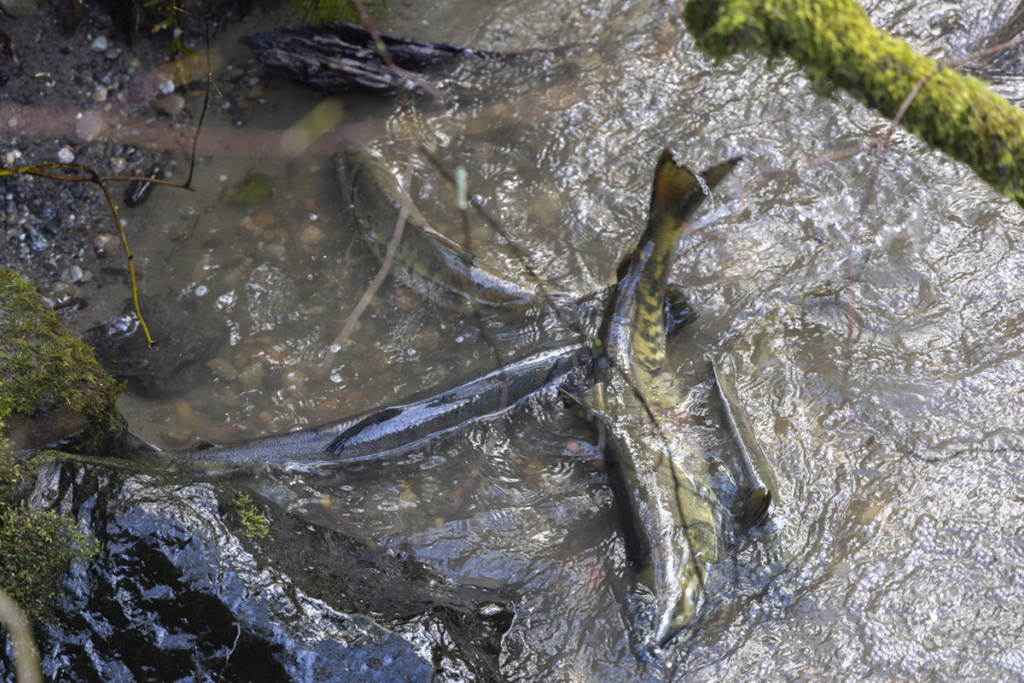EarthTalk®
From the Editors of E – The Environmental Magazine
Dear EarthTalk: What’s up with efforts to restore wild salmon to the U.S. West? – J.D. via email

Over the past century, wild salmon populations on the U.S. West Coast have declined drastically. In Washington State alone, salmon populations have dropped to as little as five to 10 percent of their historical numbers, according to the Recreation and Conservation Office. In response, efforts to restore them have ramped up as concerns grow about their survival.
Salmon play a crucial role in the environment, supporting ecosystems, fishing industries and Indigenous communities that have depended on them for centuries. But between habitat destruction, overfishing and climate change, the numbers really took a hit. In recent years, there’s been a big push to restore them, with new projects and funding, though overall progress has been inconsistent in certain areas.
One of the biggest problems is that salmon habitats have changed over time. Dams block their migration routes, making it harder for them to reach the places where they spawn. Some projects, such as those on California’s Yuba River, are working on removing barriers or building special passages so salmon can get through easier. Another issue is water temperature—rivers are getting too warm because of climate change and salmon need cold water to survive. In some areas people have been planting more trees along riverbanks to help provide more shade but it’s a slow process. Plus, erosion causes too much dirt in the water which can end up burying salmon eggs before they can hatch.
There’s been a lot more funding lately to help salmon recover, but this isn’t a new effort. Since the 1990s, billions of dollars have been invested in salmon restoration across the Pacific Northwest, with funding from federal, state and tribal governments. In 2023, the U.S. Congress allocated an additional $60 million to support restoration projects, with the National Oceanic and Atmospheric Administration (NOAA) leading multi-agency federal efforts to improve wild salmon populations. Some hatcheries are also stepping in, raising salmon to release into the wild, though some scientists worry that hatchery fish might not act like real wild salmon and could mess with natural populations.
But even with all these efforts, salmon still have a lot of problems. Climate change is making rivers drier in some places and flooding in others, which totally throws off their migration. Plus, there’s still a debate over whether big dams should be taken down to let salmon move freely again. Meanwhile, predators like sea lions have been snatching up more salmon lately, making it even harder for the fish to bounce back.
To help, check to see if seafood is sustainably caught, support policies that protect salmon, and volunteer for local conservation projects. And of course, tackling climate change matters, because without fixing bigger environmental issues, salmon recovery will be an uphill battle. There’s a long way to go, but with enough effort, wild salmon could still make a comeback.
CONTACTS: NOAA’s Plan to Save Wild Salmon and Steelhead, fisheries.noaa.gov/west-coast/endangered-species-conservation/saving-pacific-salmon-and-steelhead.
EarthTalk® is produced by Roddy Scheer & Doug Moss for the 501(c)3 nonprofit EarthTalk. See more at https://emagazine.com. To donate, visit https://earthtalk.org. Send questions to: question@earthtalk.org.
Viewers are encouraged to subscribe and join the conversation for more insightful commentary and to support progressive messages. Together, we can populate the internet with progressive messages that represent the true aspirations of most Americans.